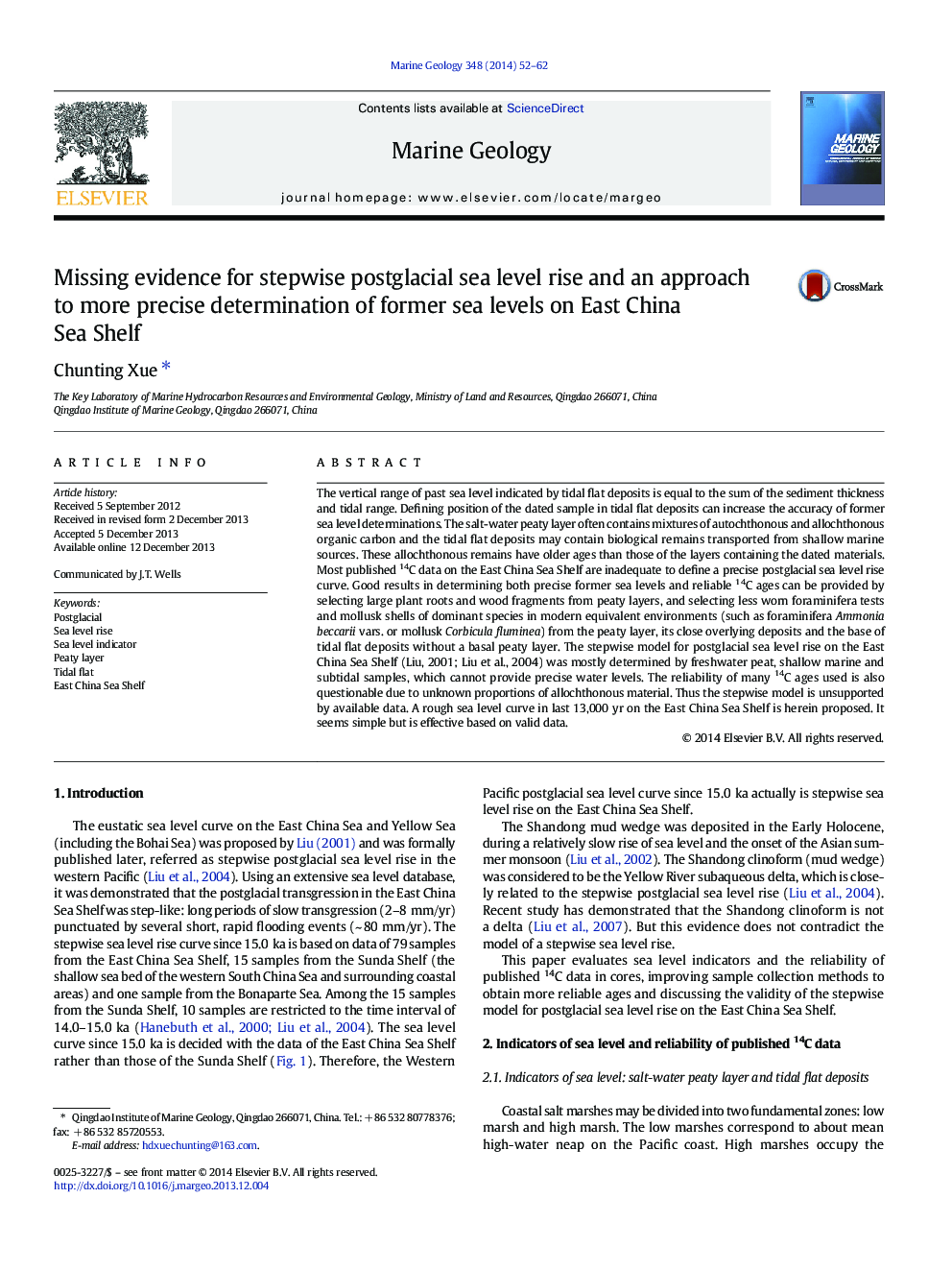| Article ID | Journal | Published Year | Pages | File Type |
|---|---|---|---|---|
| 6441770 | Marine Geology | 2014 | 11 Pages |
Abstract
The vertical range of past sea level indicated by tidal flat deposits is equal to the sum of the sediment thickness and tidal range. Defining position of the dated sample in tidal flat deposits can increase the accuracy of former sea level determinations. The salt-water peaty layer often contains mixtures of autochthonous and allochthonous organic carbon and the tidal flat deposits may contain biological remains transported from shallow marine sources. These allochthonous remains have older ages than those of the layers containing the dated materials. Most published 14C data on the East China Sea Shelf are inadequate to define a precise postglacial sea level rise curve. Good results in determining both precise former sea levels and reliable 14C ages can be provided by selecting large plant roots and wood fragments from peaty layers, and selecting less worn foraminifera tests and mollusk shells of dominant species in modern equivalent environments (such as foraminifera Ammonia beccarii vars. or mollusk Corbicula fluminea) from the peaty layer, its close overlying deposits and the base of tidal flat deposits without a basal peaty layer. The stepwise model for postglacial sea level rise on the East China Sea Shelf (Liu, 2001; Liu et al., 2004) was mostly determined by freshwater peat, shallow marine and subtidal samples, which cannot provide precise water levels. The reliability of many 14C ages used is also questionable due to unknown proportions of allochthonous material. Thus the stepwise model is unsupported by available data. A rough sea level curve in last 13,000Â yr on the East China Sea Shelf is herein proposed. It seems simple but is effective based on valid data.
Keywords
Related Topics
Physical Sciences and Engineering
Earth and Planetary Sciences
Geochemistry and Petrology
Authors
Chunting Xue,
